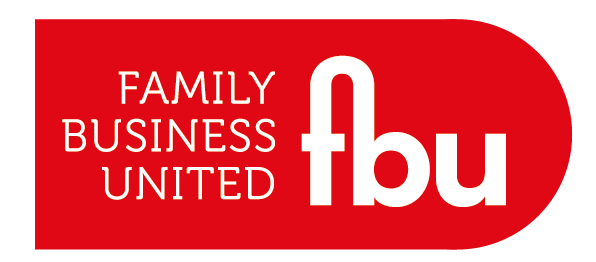We have all been in one of those meetings. You know the one's where you know you have a heap of work that's super-urgent but you're here, in a meeting, on the receiving end of information that you might not need.
According to The Independent, "The average employee spends nearly 13 working days a year in 'unproductive meetings'. You can read more here.
We all know what a meeting shouldn’t look like. So what should it look like? And how can you bridge the gap?
- Clear agenda
- Set your intentions
- Start and finish on time
- Why not record your meetings in a different way?
- Set the meeting rules
- Extra tips given to us by others!
This article will cover our 5 top tips for holding great meetings. Let’s get into it.

Photo by You X Ventures on Unsplash
1. Clear agenda
Sure, having a clear agenda sounds totally obvious. But I know I've been guilty of showing up without a script, thinking I can just wing it on the day. There's a well-know saying: fail to plan, plan to fail! Make sure you take time out to plan.
By creating an outline of what you need to cover off in the agenda, you force the meeting to run more smoothly, and give it a purpose rather than wondering just what to talk about next. Sometimes, if you allow conversation to run too freely, you risk the meeting descending into chaos. When you have a plan to work to, those in the room will know you mean business and that you are set on meeting your goals for the session. This can have the side effect of motivating your team as well.
Add timings next to each agenda item to avoid one topic taking up too much of the meeting time. This also reduces the likelihood of having to book a follow up meeting due to running over.
Include a small amount of time for ‘any other business’ or AoB. If anything detail or process orientated comes up, it can be deferred until the AoB section to avoid getting ‘bogged down’ in unnecessary conversations.
2. Set your intentions
Don't hold a meeting for meetings' sake - set objectives!
What is the purpose of the meeting? What are the required outcomes? Establish this at the start so attendees will know what to expect.
By setting your intentions for the meeting, you send a signal that you're serious about getting things done. Respect is central to a well run meeting. Depending on what sort of culture has emerged in your workplace, meetings can occasionally become derailed if you're not clear about the purpose. This is especially true when you have senior management or leadership in your meeting, as they can sometimes unknowingly (or knowingly!) hijack the agenda to their own.
Intentions for the meeting can be re-enforced through use of a 'car park'. This is when a discussion topic is important, but not for right now. Make a note of this topic and move it to the ‘car park’. Then agree to come back to it later, or ‘offline’. This way, important conversations are not forgotten or missed, just parked. The time you spend in the meeting is not wasted, it's focused on your objective. Win-win!
.jpg)
Don’t use a meeting as your safety blanket! We've all been in meetings that are unnecessary, and come out feeling deflated, confused and all too aware of the time lost.
3. Start and finish on time
Respect other people’s time! It's possible that your meeting may precede someone else's meeting. Therefore, if it starts late and they have to leave part-way through, it can be incredibly disruptive.
Have someone take minutes, so if one of your meeting attendees is running late, they can be updated, rather than having to start over when they walk in late!
Again, this is why timing is key so you don’t try and cram too much into the allotted time. Treat time like the valuable commodity that it is.
If you think the meeting is likely to run over, why not split it into two parts?
Finally, it is important to allocate time to questions and discussion in your meeting. Otherwise, attendees may feel talked at, rather than being talked to and it could probably have been said in an email! I've seen as much as 25% of the allocated meeting time given to Q&A. It can often be the most productive part of the meeting.
4. Why not record your meetings in a different way?
How often do you use mindmaps? Mindmapping is a facilitation technique we often use that allows those present to contribute to the session. Mindmaps help with creativity, and encourage free flowing of ideas.
Get your hands on a whiteboard or flipchart and get mindmapping.
Mindmaps have just 2 rules:
- Record everything - no answer is wrong!
- Aim to fill the page with ideas!
This allows everyone to contribute, and can create a domino effect to new ideas. It also helps you to see how different ideas link together, and its fun! By tracking the thoughts of the people in the room, you begin to discover a detailed map of the camp, and from there you can start to build out potential routes and options.
This technique is perfect for generating ideas and holding a meaningful discussion - why not give it a try at your next meeting?
5. Set meeting rules
Setting the rules for your meeting at the start is key to the smooth running of the session ahead. Without rules, mayhem has the potential to ensure. You don't need to write a list, just inform people of what's OK and what's not OK.
By setting the tone through your rules, you communicate the level of formality you expect the attendees to abide by. Without them, people don't know what is acceptable and what's not, so have a tendency to make up their own rules.
Here are some ideas for establishing meeting rules:
- If you have an issue, don’t make it personal! Talk about the process, not the person.
- Be respectful with air time. Make sure you listen to one another and do not interrupt (a simple one, but very important)!
- Be radically honest with one another.
- Assume everyone has come to this meeting with good intentions, see how it can change your mindset.
- Encourage people to put their laptops and phones away so they can focus on the meeting. Only the people presenting and taking the minutes should have their laptop open in front of them.
- If it is a long meeting, schedule in breaks and encourage people to leave the room, go for a walk, or get a drink.

Photo by Sam Dan Truong on Unsplash
Extra tips given to us by others:
- Move locations! Sitting still for long periods of time can be draining, why not mix it up? Is there somewhere else you could sit? Could you hold a walking meeting instead? You might find it helps to boost creativity (weather permitting of course)!
- Instead of holding lengthy meetings about priorities, why not hold a stand up meeting? Give each person 5 minutes to talk about what they have achieved this week and their priorities for next week. We have started adding in 3 more elements to our stand up meetings: What are you grateful for, proud of (can be you or someone else), and sorry for. It keeps it interesting and gives you a chance to praise others who have helped you/done good work. Highlight what you might want help/advice on. It’s a nice way to finish the week together!
- It can be difficult to go from one task/meeting to another. Before the start of a meeting, have 2 minutes away from your desk to focus your mind and get ready.
Do you have any meeting tips? We would love to know!


.jpg)

